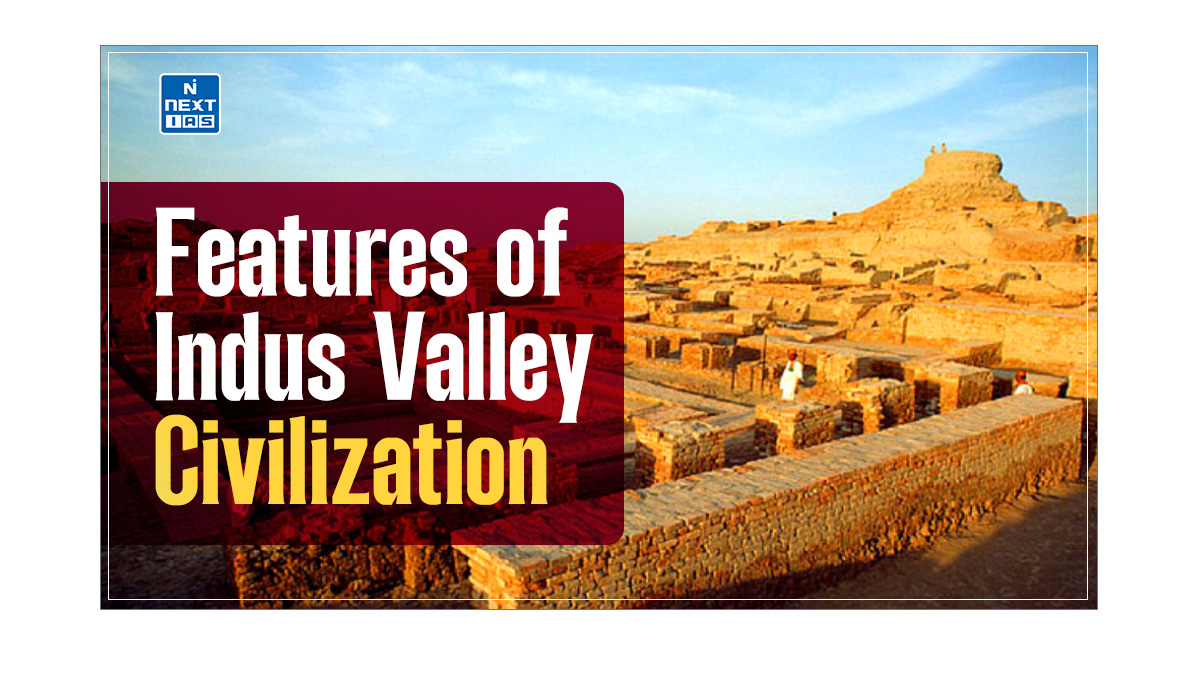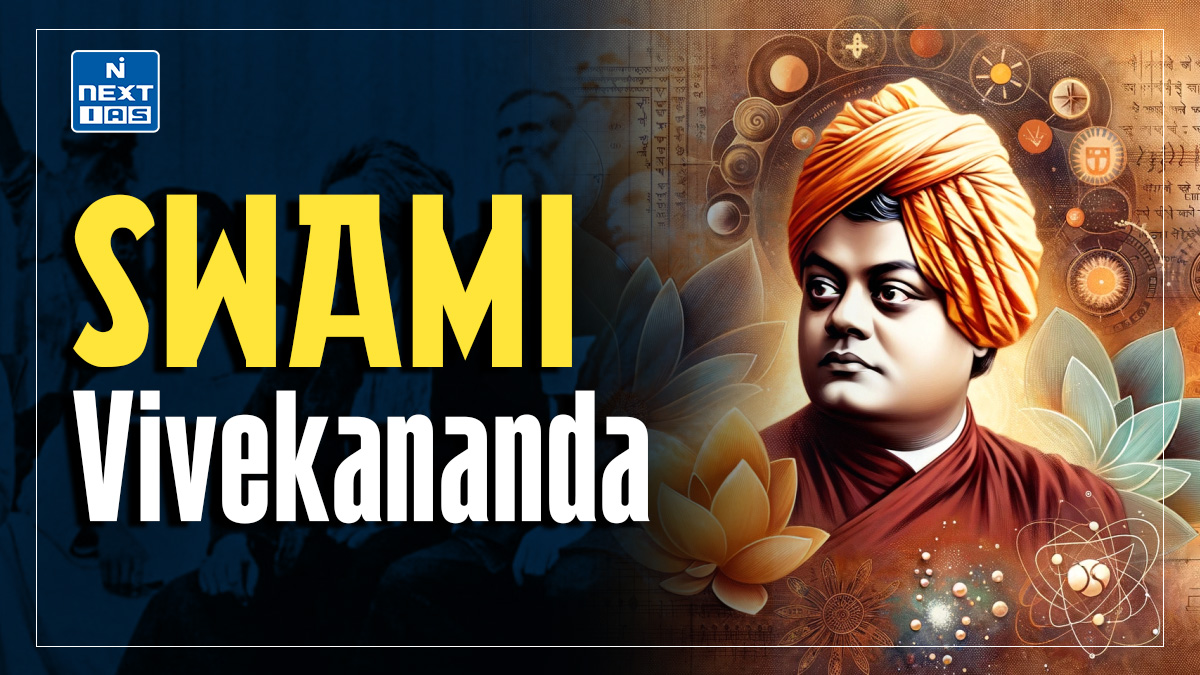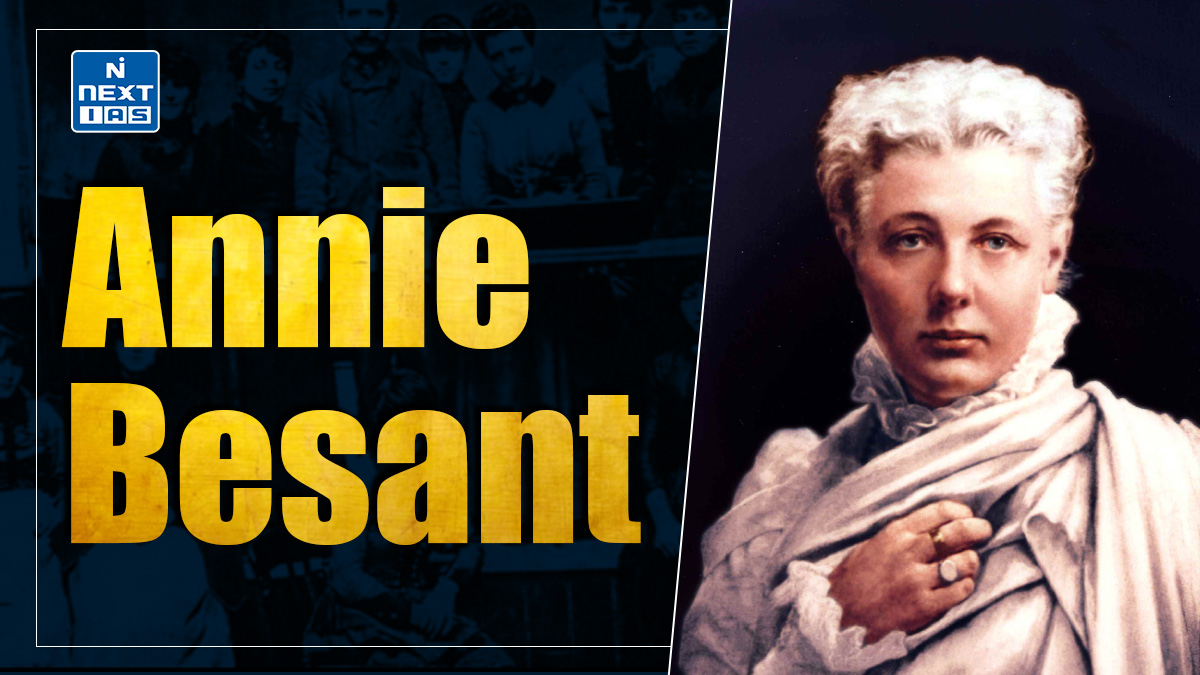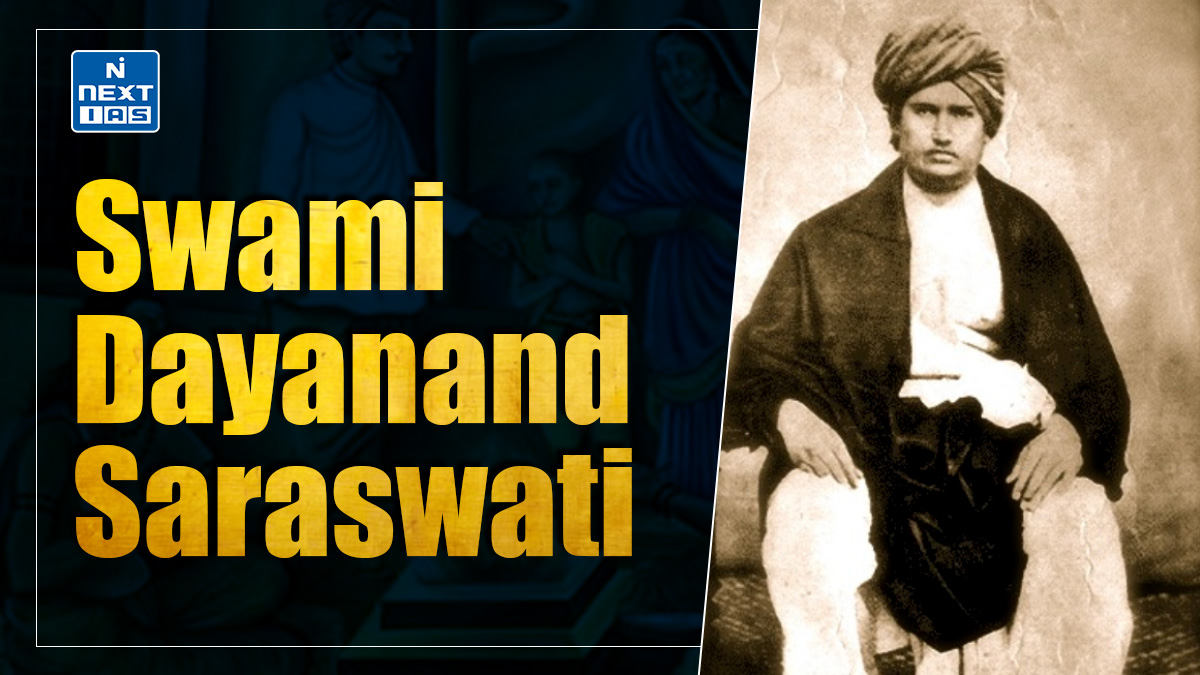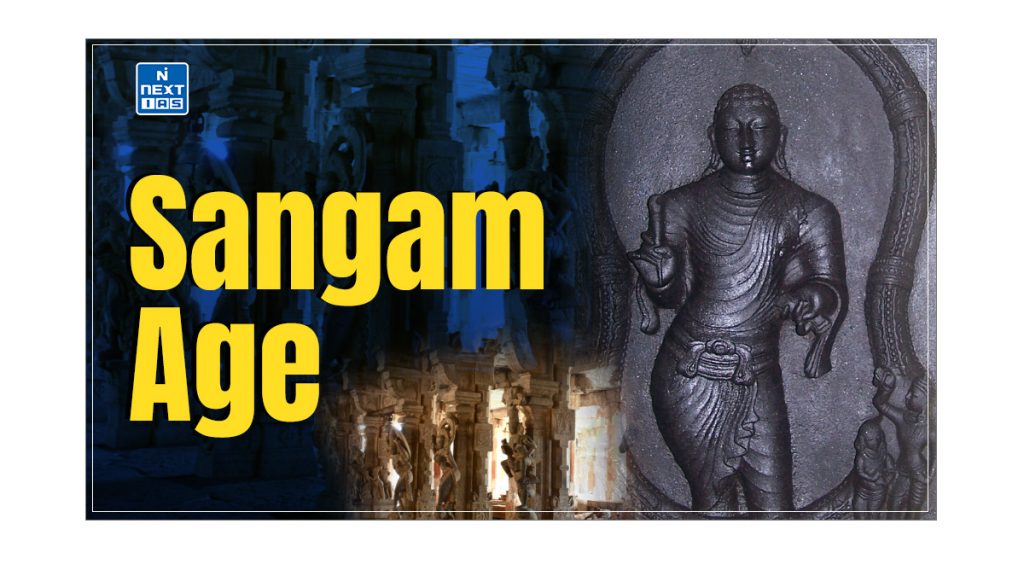
The Sangam Age refers to the period in ancient South Indian history marked by the flourishing of Tamil literature, culture, and political institutions. It is highly significant for providing valuable insights into the socio-political, economic, and cultural life of ancient Tamil Nadu. This article aims to study in detail the various aspects of the Sangam Age, including its dynasties, administration, economy, society, and cultural contributions.
About Sangam Age
- The literal meaning of the term ‘Sangam’ is ‘confluence’.
- However, in South India’s ancient history, the Sangam Age can be termed an assembly or an academy of learned people held under the patronage of South Indian kings, who were great lovers of literature and fine arts.
- The Sangam Age is an essential chapter in South Indian history.
- According to Tamil legends, there were three Sangams in ancient Tamil Nadu, popularly known as ‘Muchchangam’.
- These Sangams flourished under the royal patronage of the Pandyas. The literary works of the Sangam Age help reconstruct history.
| Councils/Sangam | Place of Confluence | Patrons | Participants | Literature |
| First Sangam | Madurai | Pandyas | Gods and Legendary sages | No literary work available of this Sangam |
| Second Sangam | Kapatapuram | Pandyas | Large number of poets | All the literary works had perished except Tolkappiyam |
| Third Sangam | Madurai | Pandyas | Large number of poets | Voluminous literary work (only a few survived) |
Three Dynasties of Sangam Age
- During the Sangam Age, the Tamil country was ruled by three dynasties: the Cheras, the Cholas, and the Pandyas.
- The political history of the Sangam Age can be traced from literary references.
Early Cholas
- The Chola kingdom, which came to be called as Cholamandalam (Coromandel), extended from southern Andhra Pradesh to modern Tiruchirapalli or Trichy district of Tamil Nadu.
- It was northeast of the Pandya Kingdom, between the Pennar and Velar rivers.
- Their capital was first located in Uraiyur, which was famous for the cotton trade.
- Elara, a Chola King of the second century B.C., conquered Sri Lanka and ruled the island for around 50 years.
Read our detailed article on the Chola Empire.
Early Cheras
- The Cheras, or the Keralas, ruled mostly over Kerala and parts of Tamil Nadu.
- Situated to the west and north of the Pandya kingdom, the region consisted of diverse ecological zones, including strips of land between hills and forests.
- While Vanji was the capital town, Tondi and Musiri were vital seaports.
Read our detailed article on the Cheras Empire.
Early Pandyas
- The Pandyas ruled over the south and southeast portions of the Indian peninsula, with their capital at Madurai.
- Megasthenes first mentioned them, saying that the Pandya rule was celebrated for pearls.
- The Pandya kingdom was wealthy and prosperous, enjoying healthy trade with the Roman Empire.
Read our detailed article on the Pandyas Empire.
Sangam Polity
- The Sangam Polity was one of the earliest political formations of peninsular India.
- The period saw hereditary monarchy as the popular form of government.
- The King’s sabha, or avai, was attended by a number of chiefs and officials.
- The King was assisted by many officials who were divided into five councils.
- They were ministers (amaichar), priests (anthanar), military commanders (senapathi), envoys (thuthar) and spies (orrar).
- Sabha and Manram were the assemblies that performed the judicial and other miscellaneous functions.
Sangam Administration
- The king was the centre and embodiment of administration. He was called Ko, Mannam, Vendan, Korravan or Iraivan.
- Though the hereditary monarch was the prevailing form of government, disputed successions and civil wars were not unknown.
- The court of the crowned monarch was called Avai. The idea of the ‘conquering king’ (Vijigishu) was accepted and acted on. The King’s birthday (Perunal) was celebrated every year.
Provincial and Local Administration of Sangam Age
- The entire kingdom was called Mandalam. The Chola mandalam, Pandya mandalam and the Chera mandalam were the original major mandalam.
- Below the mandalam was a significant division, nadu (province). The ur was a town that was variously described as a big village (perar), a small village (sirur) or an old village (mudur).
- Pattinam was the name of a coastal town, and Puharwas was the harbour area.
- Nidus was generally administered by hereditary chiefs. The village was the fundamental administration unit, administered by local assemblies called man rams.
Sangam Revenue System
- Land revenue was the chief source of the state’s income, while customs duty was also imposed on foreign trade.
- The Pattinappalai talks about the customs officials employed at Puhar’s seaport.
- Booty captured in wars formed a major income for the royal treasury.
- Kural, a post-Sangam work by Thiruvalluvar, states that the King’s treasury should be stocked through various sources of income, viz., land revenue, customs and annexation.
Sangam Economy
- The Maduraikkanji states that agriculture and trade were the main forces of economic development.
- Agriculture was the state’s primary revenue source, and cattle were considered necessary by the Sangam people.
- Many literary works mention the importance of cattle, and cattle raids in the enemy country led to more significant battles.
- The importance is magnified by Sangam poems, which frequently discuss milk and milk products such as curd, butter, ghee, and buttermilk.
- One of the king’s primary duties was to protect his kingdom’s cattle.
Sangam Society
- Tolkappiyam refers to the five-fold division of lands – Kurinji (hilly tracks), Mullai (pastoral), Marudam (agricultural), Neithal (coastal) and Palai (desert).
- Different kinds of people inhabited these various classified lands and developed certain fixed customs and ways of life due to their interaction with their respective environments. Some of them are:
| Type of Land | Chief Deity | Chief Occupation |
| Kurinji (hilly tracks) | Murugan | Hunting and honey collection |
| Mullai (pastoral) | Mayon (Vishnu) | Cattle-rearing and dealing with dairy products |
| Marudam (agricultural) | Indira | Agriculture |
| Neithal (coastal) | Varunan | Fishing and salt manufacturing |
| Palai (Desert) | Kotravai | Robbery |
- Tolkappiyam also discusses four castes: the Arasar, Athanor, Vinegar, and Vellalar. The Arasar were the ruling class.
- While the Anthanars played a key role in the Sangam polity and religion, the Vanigars carried on trade and commerce, and the vellalars performed the role of agriculturists.
- Numerous tribes, such as Parathavar, Panar, Eyinar, Kadambar, Maravar, and Pulaiyar, existed in the Sangam era.
- There are references to the slaves known as adimai (one who lived at the feet of another). The prisoners of war were made slaves, and they were traded in slave markets.
Position of Women in Sangam Age
- As per Kalithogai, a Sangam poem, women moved around the town freely, played on the riverbeds and seashores, and even participated in temple festivals.
- Despite the freedom, women were considered subordinate to men, a general characteristic of contemporary times.
- Though some references to educated women are available in Sangam literature, education among women was not common.
- Women had no property rights but were treated with consideration. Marriage was considered sacred and not a legal contract.
- The life of widows was miserable as they had to perform sati, which was considered divine.
- There are references to wooing or even elopements, generally followed by conventional marriage.
Sangam Religious Beliefs
- The Sangam people did not believe in a single form of worship. They believed in animism and other forms of deity worship.
- There is evidence of tree, stone, water, animal worship, and worship of stars and planets.
- Religion in the Sangam Age was secular, and no severe clash occurred in the name of religion.
- Murugan was the primary deity of the Sangam period. The hunters of the hill tracts worshipped Murugan as the god of hillocks.
- The cowherds worshipped Tirumal so that he might bestow many milch cows on them.
Beginning of Brahmanism
- In the early centuries, Tamil Nadu started to be influenced by Brahmanism.
- However, the Brahmanic influence was confined to small pockets of the Tamil society.
- The rulers performed Vedic sacrifices, and the Brahmans carried out disputations and religious rituals.
- Though the chief god was Murugan, the worship of Vishnu was also mentioned.
- Also, the megalithic offerings to the dead continued in the Sangam era.
Sangam Literature

- The Sangam literature represents a vast collection of Tamil literature produced during the Sangam age in South India.
- Sangam Age was a college or assembly of Tamil poets who helped probably under chiefly or royal patronage.
- It sheds light on the Sangam age’s social, economic, political, and religious life.
- The Sangam literature can be roughly divided into narrative and didactic.
- Melkannakku – these are the narrative texts.
- It consists of eighteen major works, eight anthologies, and ten idylls.
- Melkannakku – these are the narrative texts.
- Kilkanakku consists of didactic works or eighteen minor works.
- Also, the Sangam literature includes Ettuthogai, Pattuppattu, Pathinenkilkanakku, and the two epics – Silappadikaram and Manimekalai.
- The Ettuthogai, or Eight Anthologies, consists of eight works: Aingurunooru, Narrinai, Aganaooru, Purananooru, Kuruntogai, Kalittogai, Paripadal, and Padirruppattu.
Tamil Twin Epics in Sangam Age
- Silappadikaram, written by Elango Adigal, and Manimekalai, written by Sittalai Sattanar, provide valuable information on the Sangam polity and society.
- Both were composed around the 6th century AD.
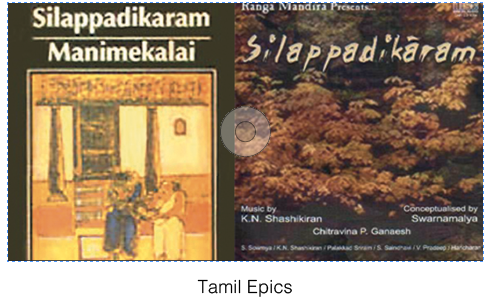
- Silappadikaram is considered to be the brightest gem of Tamil literature.
- It is a love story in which a dignitary named Kovalan prefers a courtesan named Madhavi of Kaveripattanam to his noble wedded wife, Kannagi.
- Manimekali deals with the adventures of the daughter born of the union of Kovalan and Madhavi, though this epic is of more religious than literary interest.
- Besides Sangam literature, we have some critical Tamil literature as well:
- Tolkkappiyam, authored by Tolkappiyar, is the earliest work of Tamil literature.
- It is a work on Tamil grammar, but it also provides information on the political and socio-economic conditions of the Sangam period.
- Tirukkural is an important Tamil text that deals with philosophy and maxims.
- Tolkkappiyam, authored by Tolkappiyar, is the earliest work of Tamil literature.
Period of Sangam Literature
- The chronology of the Sangam literature is still debated among scholars.
- The basic premise of Sangam chronology is that Gajabhagu II of Sri Lanka and Cheran Senguttuvan of the Chera dynasty were contemporaries.
- Also, coins issued by Roman emperors in the first century A.D. were found in abundance in different places of Tamil Nadu.
- Therefore, based on literary, archaeological, and numismatic evidence, the most probable date of the Sangam literature is from the third century B.C. to the third century A.D.
Sangam Art and Architecture
- Poetry, music and dancing were popular among the people of the Sangam age.
- Liberal donations were given to poets by the kings, chieftains and nobles.
- The royal courts were crowded with singing bards called Panar and Viraliyar.
- The bards who composed poems eulogising the chiefs played a vital role in legitimising the chief’s position in society and polity.
- Music and dance were highly developed, as the Sangam literature refers to a variety of Yazhs and drums.
- Kanigaiyar performed dancing. Koothu was the most popular form of entertainment for the people.
7 Philanthropists of Sangam Age
During the Sangam Age, several prominent philanthropists made significant contributions to society through their generosity and support for various causes. Some key figures include:
- Mutharaiyar Kings – Known for their patronage of arts and literature, the Mutharaiyar rulers funded numerous literary works and supported poets and scholars.
- Chola Kings – They contributed to infrastructure development, including temples and educational institutions, demonstrating their commitment to public welfare.
- Pazhuvettaraiyar Family – This influential family was known for their extensive donations to religious institutions and charitable causes.
- Kongu Vellalar – A prominent agriculturalist community that supported local development and infrastructure projects.
- Pattinappalai – The wealthy patrons of this era were known for their generous contributions to literary and artistic endeavours.
- Kavuntaraiyar – They provided substantial support to the local community and cultural institutions.
- Nayak Kings – Known for their role in fostering the growth of literature and art through their financial and moral support.
End of Sangam Age
- The Sangam Age slowly declined towards the end of the third century A.D. as the Kalabhras occupied the Tamil country for about two and a half centuries.
- Jainism and Buddhism became prominent during the Sangam Age.
Importance of Sangam Age
- The Sangam Age witnessed the conception of the state for the first time in South India.
- However, it was still in the process of crystallisation. Sangam polity was characterised by patriarchal and patrimonial systems in which the ruler had direct control over administrative staff and various offices.
- However, the class distinction appeared later and was not present during the Sangam age.
- Agriculture remained the backbone of the Sangam economy as the Sangam people gave great importance to the cultivation of food and fruits.
- Trading activities, especially trade relations with the Mediterranean world, enriched and influenced people’s socio-economic and cultural lives.
- The beliefs and customs practised by the Sangam people suggest the complex nature of their religion.
- Both animism and idol worship were followed during the Sangam age.
- Many of the Sangam age traditions continued and survived in the later periods; some exist even today.
Conclusion
The Sangam Age played a crucial role in shaping the cultural and historical landscape of South India. The Sangam Age laid the foundation for the Tamil language and literature, influencing generations to come. The Sangam Age witnessed the crystallisation of political structures, the growth of trade with foreign lands, and a vibrant socio-cultural life. The rich traditions, customs, and beliefs from this age continue to impact Tamil society today, underlining the enduring legacy of the Sangam Age in India’s historical and cultural evolution.
Frequently Asked Questions (FAQs)
What is Sangam age?
The Sangam Age refers to the period in ancient Tamil history from approximately 300 BCE to 300 CE, which is known for its significant literary and cultural contributions, particularly through the Sangam literature.
What are the 4 castes of Sangam Age?
During the Sangam Age, the four traditional castes were:
Brahmins – Priests and scholars.
Kshatriyas – Warriors and rulers.
Vaishyas – Merchants and agriculturalists.
Shudras – Laborers and artisans.

